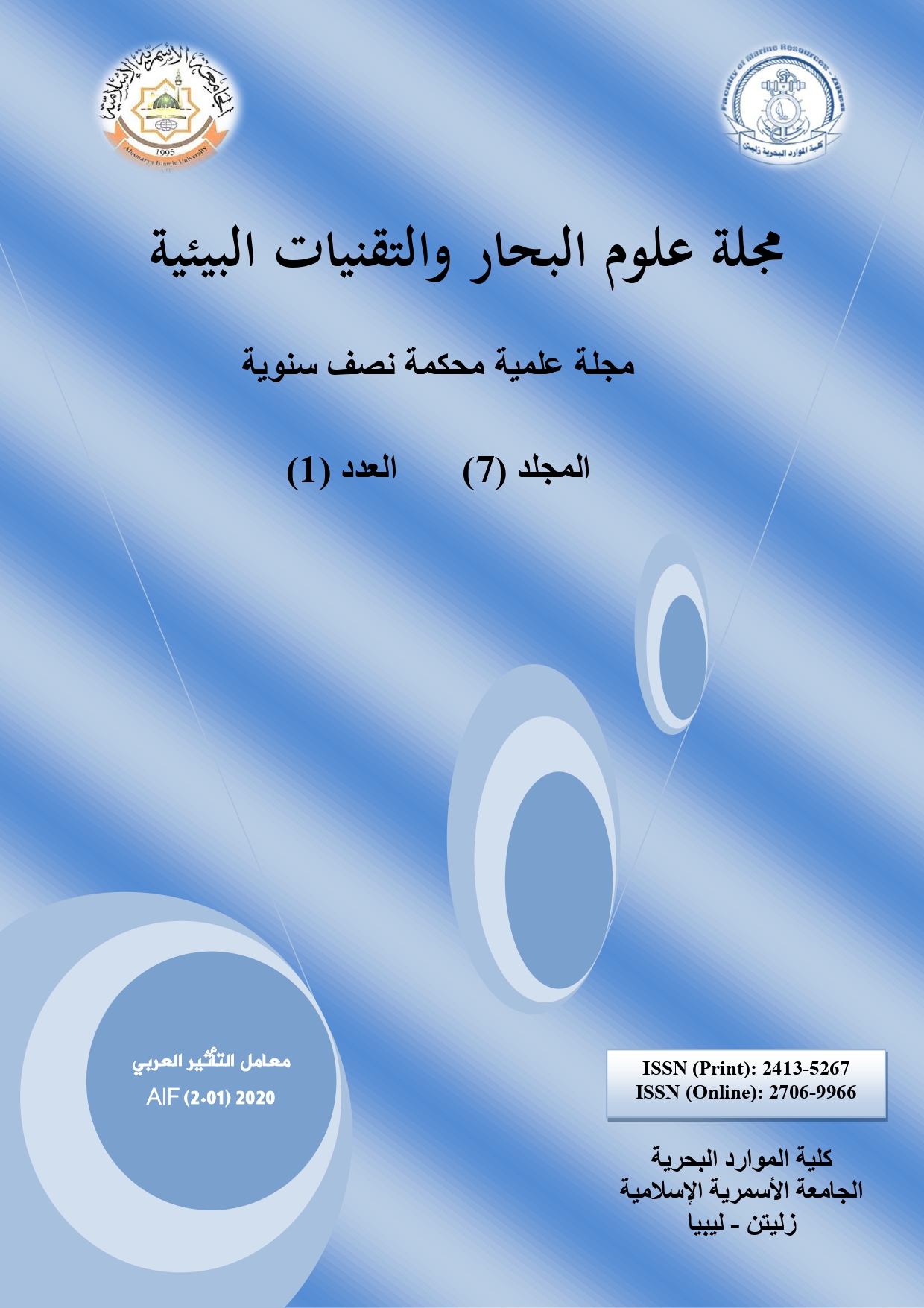سلوك التكسير الجانبي للألواح المركبة المموجة
DOI:
https://doi.org/10.59743/jmset.v7i1.29الكلمات المفتاحية:
الألواح المركبة، امتصاص الطاقة، القدرة على التحطم، التكسير الجانبيالملخص
تم إجراء دراسة تجريبية لمقارنة خصائص التكسير وقدرة امتصاص الطاقة لسلسلة من عينات الألواح المركبة ذات أشكال تمويج مختلفة وهي: جيبية، ومثلثة، ومربعة مع ألواح مركبة مسطحة موضوعة في أعلى وأسفل الألواح المموجة. تم تصنيع كل هذه العينات من ألياف زجاجية بتقنية وضع اليد. يحتوي كل ملف تعريف على ثلاثة أنواع مختلفة من العينات: لوحة مفردة، ولوحات مزدوجة، ولوحات ثلاثية. يتم تثبيت الألواح المموجة فوق بعضها البعض وتخضع لنفس النوع من حمل الضغط. كل هذه النماذج تعرضت لحمل تكسير جانبي ومن ثم تم ملاحظة انهيار هذه النماذج وتم تسجيل النتائج. أخيرا؛ تم تسجيل ومناقشة جميع النتائج التي تم الحصول عليها في هذا البحث. لقد وجد أن أعلى قيمة للطاقة النوعية للامتصاص كانت (kJ/kg 1.579) مسجلة لعينة المربع مزدوجة اللوحات. ومع ذلك، تم تسجيل أدنى قيمة (0.878 kJ/kg) للعينة الجيبية ذات اللوحة الواحدة.
المراجع
Abdelrahman W.G. and Nayfeh A.H. (1998). Micromechanical modeling of stress distribution in undulated composites under axial loading. Mech. Mater., 30: 83–90.
Boke (2012). Numerical Simulation of Mechanical Behaviour of Reinforced Sheet Metals. Master Thesis, Mc Master University, Hamilton, ON, Canada.
Bouaziz O. (2013). Geometrically induced strain hardening. Scr. Mater, 68: 28–30.
Chiskis A. and Parnes R. (1998). Nonlinear effects in the extension of an elastic space containing a wavy layer inclusion. J. Mech. Phys. Solids, 46: 1213–1251.
Chou T.W. and Takahashi K. (1987). Non-linear elastic behaviour of flexible fibre composites. Composites, 18: 25–34.
Dayyani I., Ziaei-Rad S., and Salehi H. (2012). Numerical and experimental investigations on mechanical behaviorofcomposite corrugated core. Appl. Compos. Mater., 19: 705–721.
Elbkory K.A. and Al ssahly F.A. (2018). Effect of Corrugation Geometry and Shape on Energy Absorption of Composite Plate.1st Conference for Engineering Sciences and Technology, Khoms, Libya.
Ezra A.A. and Fay R. J. (1972). An assessment of energy absorbing devices for prospective use in aircraft impact situations. In: Herrmann G., Perrone N., editors. Dynamic response of structures. Proceedings of a symposium held at Stanford University, California, June 28 and 29, 225-246.
Fraser M., Zurob H., Wu P., and Bouaziz O. (2014). Analytical model of the unbending behaviour of corrugated reinforcements. Adv. Eng. Mater., 16: 872–877.
Fraser M., Zurob H., Wu P., and Bouaziz O. (2020). Increasing Necking Strain through Corrugation: Identifying Composite Systems That Can Benefit from Corrugated Geometry. Materials, 13: 5175.
Ge R., Wang B., Mou C., and Zhou Y. (2010). Deformation characteristics of corrugated composites for morphing wings. Front. Mech. Eng. China, 5: 73–78.
Hull D. (1982). Energy absorption of composite materials under crash conditions. In: Progress in Science and Engineering of Composites, Proceedings of the 4th International Conference on Composite Materials (ICCM/4), Tokyo, 25–28 October, 861–70.
Hull D. (1983). A unified approach to progressive crushing of fibre reinforced composite tubes. Compos. Sci. Technol., 35(3): 231–246.
Khatam H. and Pindera M.J. (2012). Microstructural scale effects in the nonlinear elastic response of bio-inspired wavy multilayers undergoing finite deformation. Compos. Part B: Eng., 43(3): 869–884.
Shi Y., Zhao P.Z., Wu P.D., Lloyd D.J., and Embury J.D. (2016). Effect of rate sensitivity on structural sandwich plates with sinusoidal corrugated cores. Adv. Eng. Mater., 18: 1250–1258.
Thill C., Etches J.A., Bond I.P., Potter K.D., Weaver P.M., and Wisnom M.R. (2010). Investigation of trapezoidal corrugated aramid/epoxy laminates under large tensile displacements transverse to the corrugation direction. Compos. Part: A, Appl. Sci. Manuf., 41: 168–176.
Xue P., Yua T.X., and Tao X.M. (2000). Effect of cell geometry on the energy-absorbing capacity of grid-domed textile composites. Composites: Part A, Appl. Sci. Manuf., 31: 861–868.
Zhang Y., Lu M., Wang C.H., Sun G., and Li G. (2016). Out-of-plane crashworthiness of bio-inspired self-similar regular hierarchical honeycombs. Compos. Struct., 144: 113.
التنزيلات
منشور
إصدار
القسم
الرخصة
الحقوق الفكرية (c) 2021 مجلة علوم البحار والتقنيات البيئية

هذا العمل مرخص بموجب Creative Commons Attribution 4.0 International License.









